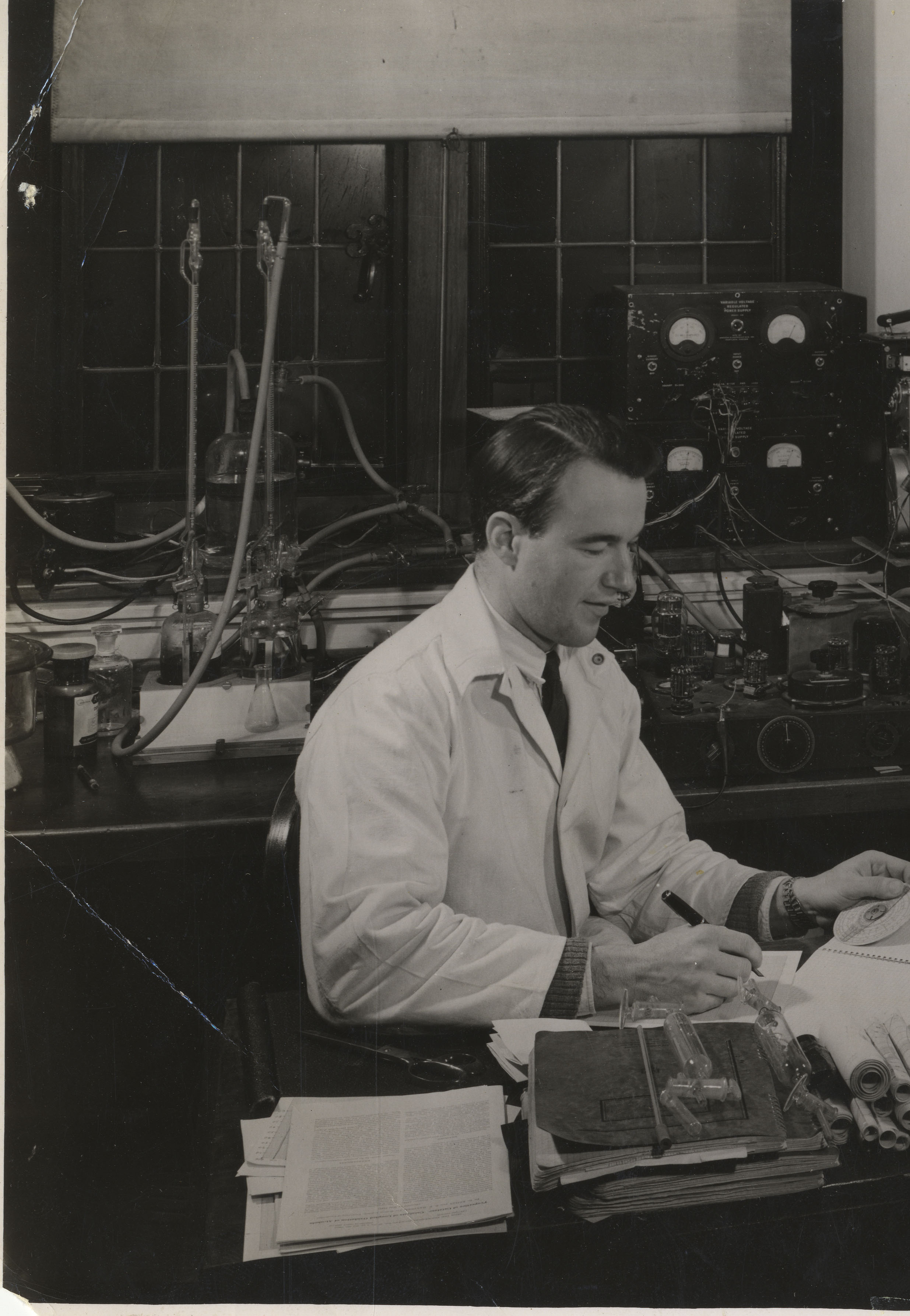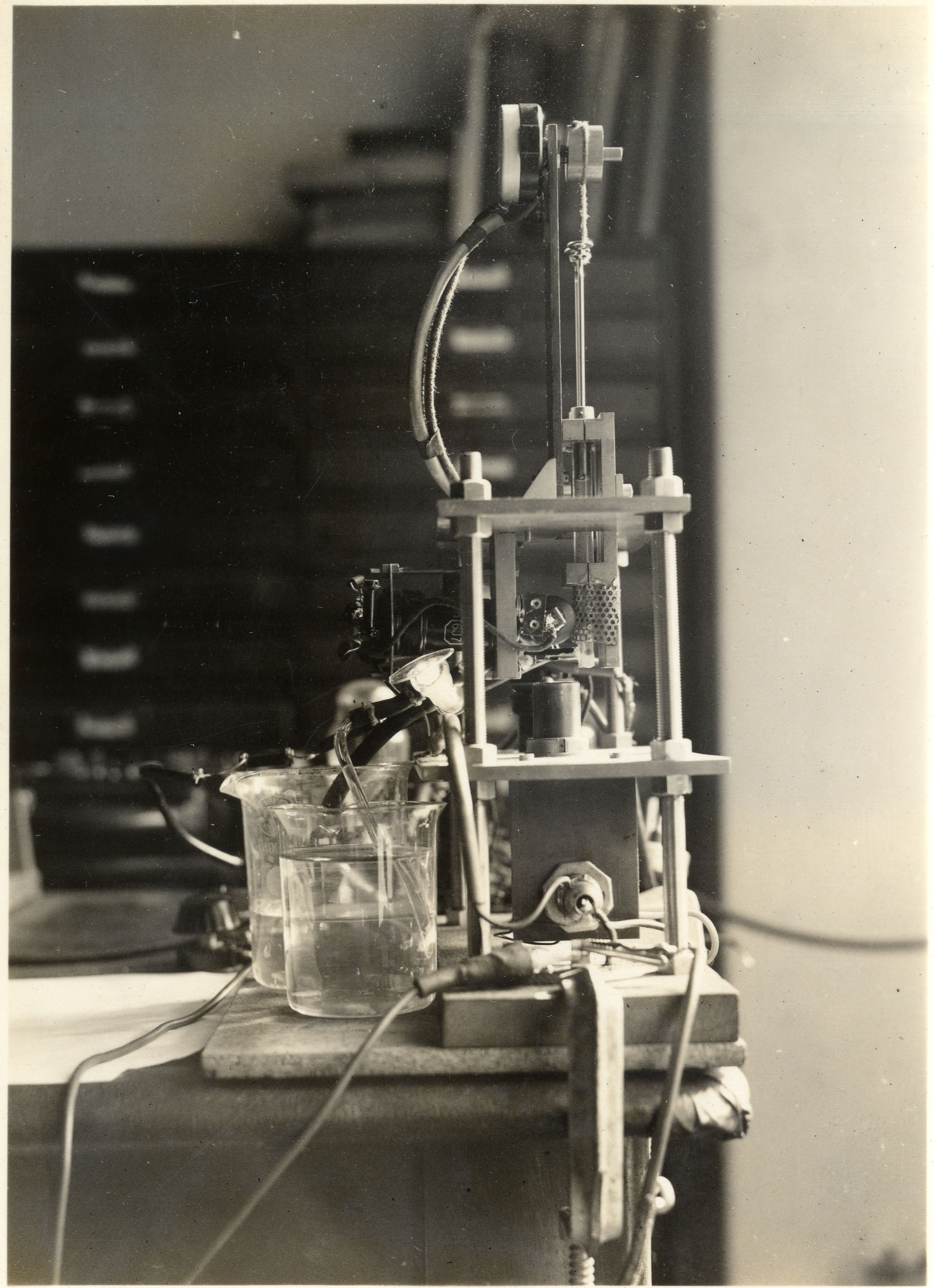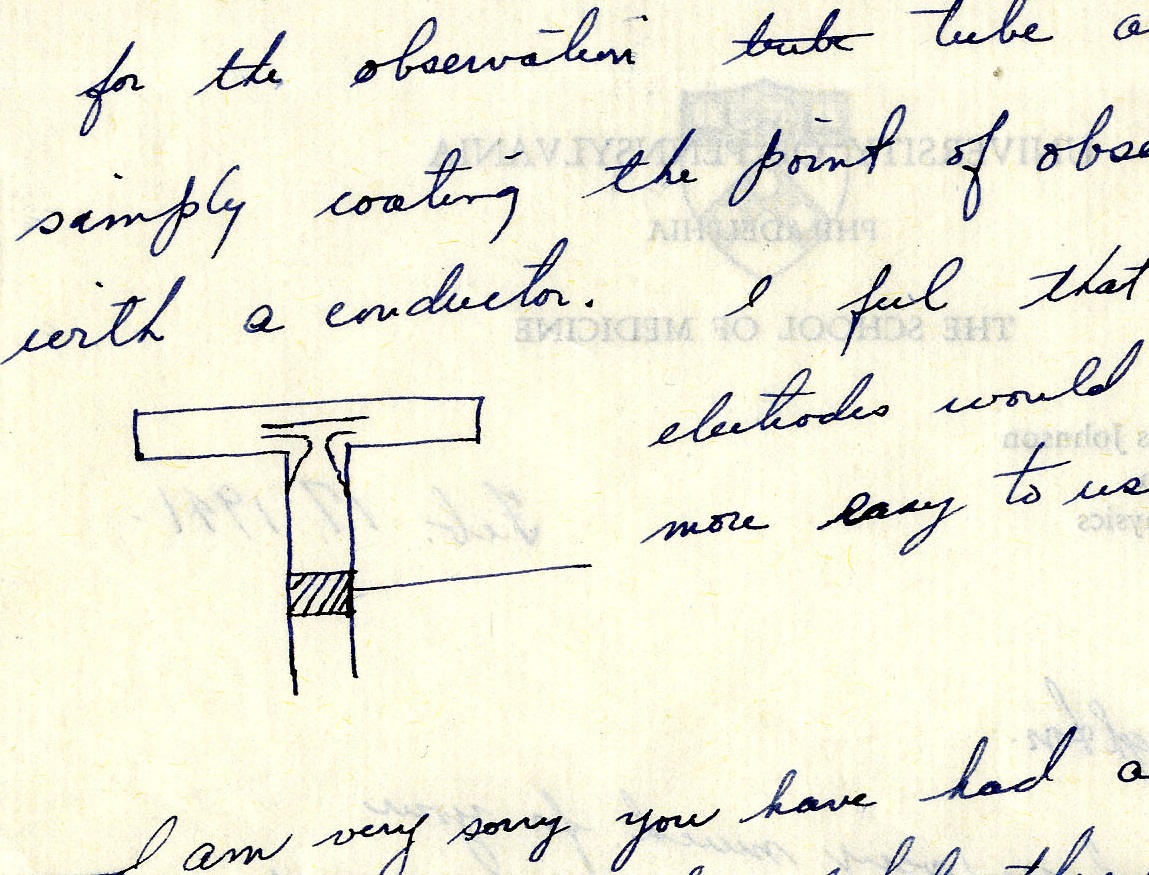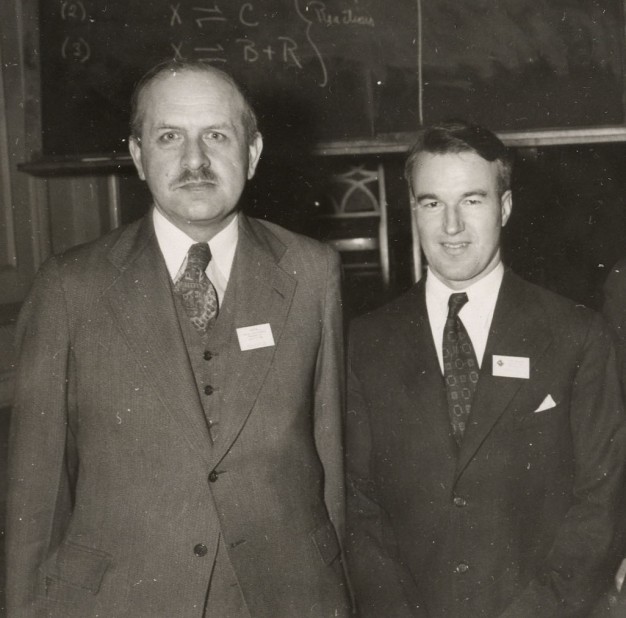Rapid-flow technique research: F.J.W. Roughton and Britton Chance
The Francis John Worsley Roughton Papers and the Britton Chance Papers will be forever linked as professor and student for their innovative development of the stop flow apparatus for enzymology research.
Long before Britton Chance arrived as a student, in 1937, at the Cambridge University Department of Colloid Science, Professor Roughton had been making strides in speeding up the time it takes to research the study of oxygen binding to haemoglobin. From 1922-1926, Roughton and Hamilton Hartridge had devised a way to speed up the observation time of chemical and biochemical reactions in test tubes. They built an apparatus to let the reactants pass through a mixing chamber to a capillary tube where time is converted to length by observation of progress to a reaction along the tube. Later, they improved upon this with a spectral camera on a photographic plate that could be scanned in a densitometer. In the mid-1930s, a photoelectric colormeter, for recording the degree of oxygenation of haemoglobin, was added by Roughton’s student Glen Millikan.

Enter Britton Chance, with his great talent for instrumentation, which he used not only in the laboratory but also for navigation as an Olympic sailor. He developed the use of rapid-flow techniques for the study of enzyme reactions. He was the right person at the right time to make use of emerging electronic techniques, making it possible to observe changes in reaction mixtures on a millisecond time-scale.


Illustrated here is the stop flow apparatus upon its completion and an early drawing of it in a letter from Chance to Roughton. Both APS collections, F.J.W. Roughton, Mss.B.R755, and Britton Chance, Mss.Ms.Coll. 160, have extensive correspondence, research notes, and illustrations of the work both contributed to this biophysical method and are rich in physiological research later conducted by the two as colleagues.
Reference: Gutfreund, H. Rapid-flow techniques and their contributions to enzymology, Reflections, November, 1999.

